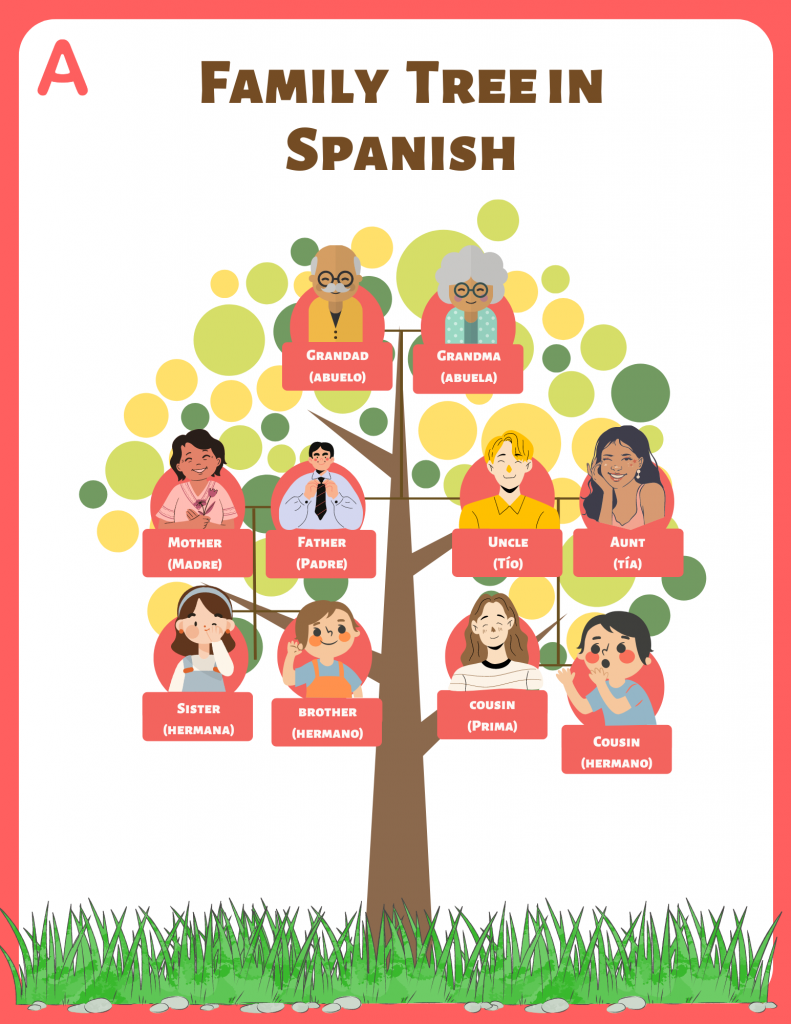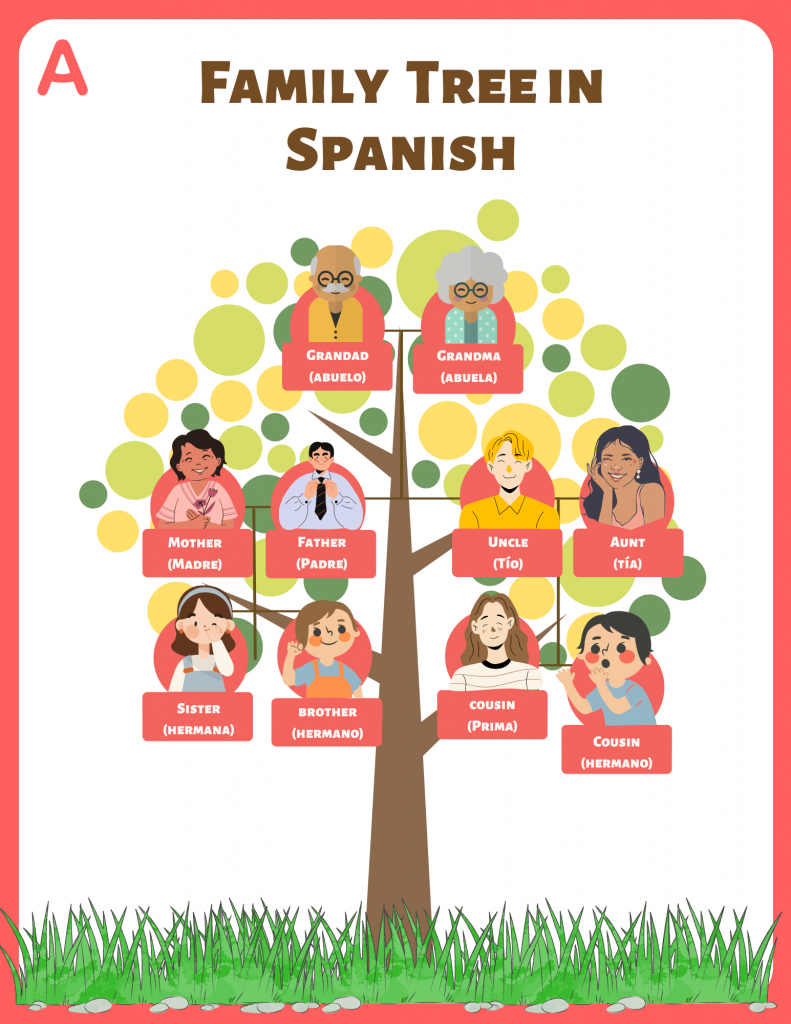Learning how to refer to family members in Spanish is an important first step in building Spanish vocabulary. Spanish has specific words to describe family connections that English speakers should become familiar with.

Knowing these family terms in Spanish allows you to talk about your own family, understand other people’s families, and expand your ability to communicate in Spanish. Whether you’re a beginner or advanced Spanish speaker, reviewing these common words for family members can improve comprehension and conversation.
The Importance of Family Vocabulary in Spanish
Building vocabulary is key in any new language. Learning family-related terms early on serves several important purposes for Spanish learners:
- Family is an essential, universal topic for making connections and building relationships
- Family words are some of the most frequently used nouns in Spanish
- These terms help introduce new grammar principles like gender and possession
- Family bonds play a central role in Hispanic/Latino cultures
- Many other vocabulary words connect to family members
In short, learning words for family in Spanish provides an extremely useful foundation for developing language fluency and cultural appreciation.
Core Family Members in Spanish
Just like in English, core family connections in Spanish include close relatives and members of the household. Here are some of the fundamental family terms in Spanish that every learner should know:
Immediate Family Nouns
- Father = padre
- Mother = madre
- Son = hijo
- Daughter = hija
- Brother = hermano
- Sister = hermana
- Husband = esposo/marido
- Wife = esposa
Extended Family Nouns
- Grandfather = abuelo
- Grandmother = abuela
- Grandson = nieto
- Granddaughter = nieta
- Uncle = tío
- Aunt = tía
- Cousin = primo/prima
- Nephew = sobrino
- Niece = sobrina
You’ll notice that most family terms in Spanish are very similar to their English equivalents. Focusing on the connections between these languages can help you pick up vocabulary more easily.
Possessive Adjectives for Family
In English, we add apostrophes to nouns to show possession – “my father,” “her sister,” etc. Spanish uses special possessive adjectives that correspond to pronouns like my, your, his, and her.
Here are the basic possessive family terms in Spanish:
- My (mother) = mi (madre)
- Your (father) = tu (padre)
- His/her (sister) = su (hermana)
- Our (uncle) = nuestro (tío)
These possessive adjectives will often accompany your Spanish family nouns. Learn them together to demonstrate relationships more accurately while speaking.
Addressing Family Members
In English, we use words like mom, dad, grandpa to directly address family. Spanish has its own unique kinship terms of address that are commonly used:
- Mom = mamá
- Dad = papá
- Grandfather = abuelo
- Grandmother = abuela
Use these exact Spanish words when speaking directly to family instead of the basic vocabulary terms. Terms of address convey closeness and affection.
The Extended Spanish Family
Hispanic culture places great significance on extended family beyond just parents and siblings. Here are some additional relatives you may encounter in Spanish:
- Stepparent = padrastro/madrastra
- Stepbrother/stepsister = hermanastro/hermanastra
- Half-brother/half-sister = medio hermano/media hermana
- Godmother = madrina
- Godfather = padrino
- Great-grandparent = bisabuelo/bisabuela
Don’t worry about memorizing every extended term now. Focus first on the basics. But be aware that Spanish families encompass broad, complex relationships.
Using Family Terms and Phrases in Conversations
Vocabulary words only become useful when you put them into practice. Here are some examples of how to integrate Spanish family nouns and possessive adjectives into sentences and conversations:
- ¿Cuántos hermanos tienes? = How many siblings do you have?
- Mi abuela se llama Isabel. = My grandmother’s name is Isabel.
- Nuestra tía vive en México. = Our aunt lives in Mexico.
- Sus padres son muy amables. = Their parents are very kind.
Practice talking about your own family or asking questions about others’ relatives. Descriptive phrases will help reinforce new vocabulary words.
Common Spanish Last Names Connect to Family
Pay attention to Spanish surnames as well, as these often have family origins:
- Rodríguez = Son of Rodrigo
- Fernández = Son of Fernando
- Gómez = Son of Gome
- López = Son of Lope
- González = Son of Gonzalo
Many traditional Spanish last names derived from the father’s first name plus “-ez.” Being aware of this can provide insight into naming traditions.
Key Takeaways
Learning vocabulary for family members in Spanish is essential for beginners and advanced speakers alike. Focus first on memorizing the core terms, like mother, grandson, aunt. Then expand your knowledge to extended relatives.
Possessive adjectives (my, your, their) will accompany your family nouns to specify relationships. And utilize unique address names like mamá, papá when speaking directly to relatives.
Incorporate new family vocabulary into descriptive phrases and practice using them in sentences. Talk about your own family tree as well as asking questions about others’. This will rapidly reinforce your comprehension.
Mastering how to say words for family members is key to unlocking fluency in Spanish. These common, essential terms lay the foundation for describing real-world relationships and expanding conversational ability.



